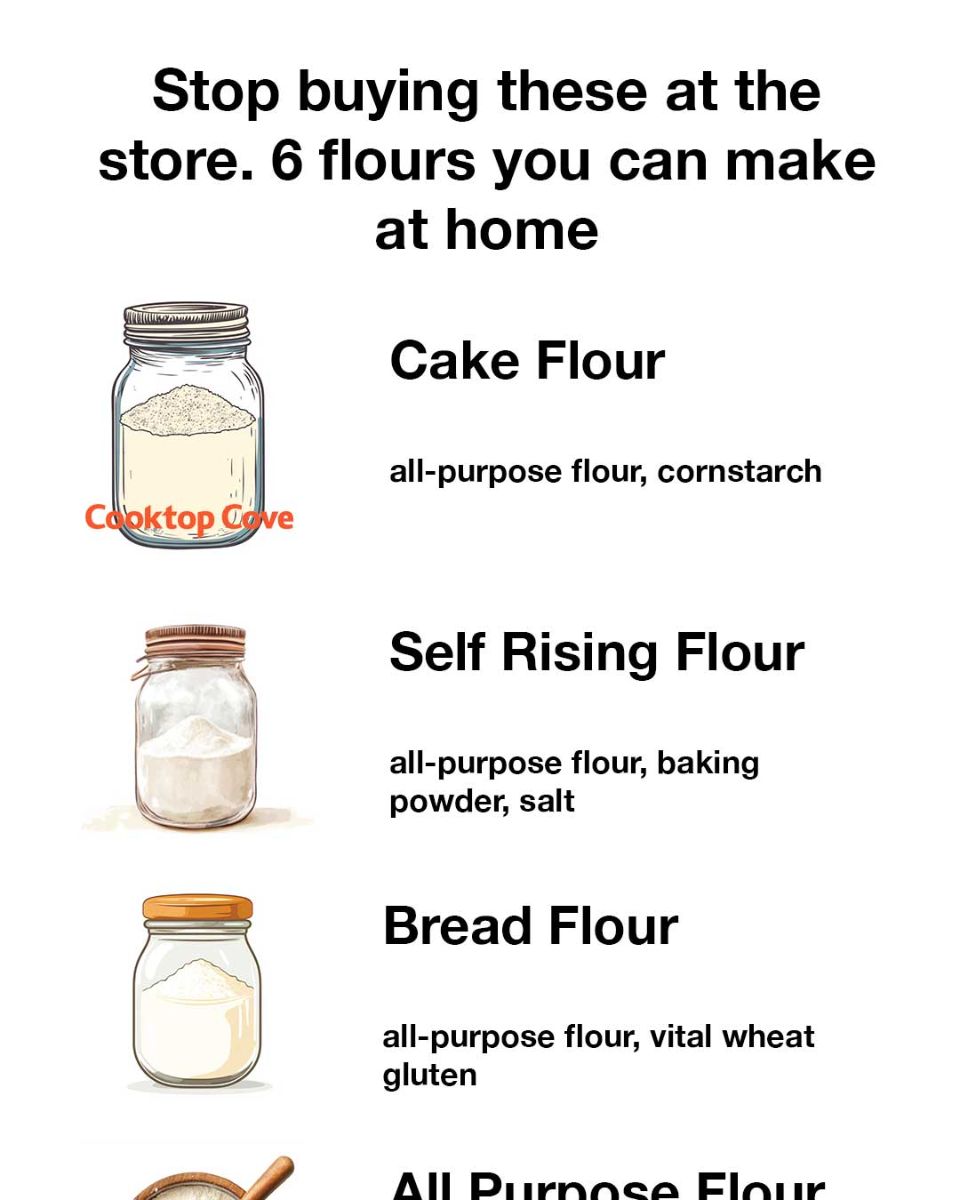In recent years, there has been a growing interest in homemade and artisanal food products, and flours are no exception. Making flour at home might seem like a daunting task, but it is surprisingly simple and rewarding. With a few basic ingredients and tools, you can create a variety of flours that cater to your specific dietary needs and culinary preferences. This article explores six types of flour you can easily make at home, saving you trips to the store and ensuring you have fresh, high-quality flour at your fingertips.
Benefits of Making Your Own Flours
There are numerous benefits to making your own flours at home. Firstly, it allows you to control the quality and source of the ingredients, ensuring that your flour is free from additives and preservatives. Secondly, homemade flours can be tailored to your dietary needs, such as gluten-free or whole grain options. Additionally, making flour at home can be more cost-effective in the long run, especially if you buy grains in bulk. Finally, the process of making flour can be a satisfying and educational experience, giving you a deeper appreciation for the ingredients you use in your cooking and baking.
Essential Tools and Ingredients for Homemade Flours
To make flour at home, you will need a few essential tools and ingredients. A high-quality grain mill or a powerful blender is crucial for grinding grains into flour. Depending on the type of flour you want to make, you will need different grains or seeds, such as wheat berries, rice, or almonds. A fine-mesh sieve or sifter is also useful for achieving the desired texture. Additionally, having airtight containers for storing your homemade flours will help maintain their freshness and prevent spoilage.
1. How to Make Cake Flour at Home
Cake flour is known for its fine texture and low protein content, which is ideal for creating tender and fluffy cakes.
Ingredients:
1 cup all-purpose flour
2 tablespoons cornstarch
Instructions:
Measure 1 cup of all-purpose flour and place it in a bowl.
Remove 2 tablespoons of the flour and return it to your flour container—you won’t need it.
Replace the removed flour with 2 tablespoons of cornstarch.
Sift the mixture at least 2–3 times. This not only blends the cornstarch evenly but also aerates the flour for a lighter texture.
Use immediately in recipes that call for cake flour, or store in an airtight container for future use.
Tip: This homemade version mimics the low protein content of commercial cake flour and helps create tender, soft cakes with a fine crumb.
2. Crafting Self-Rising Flour in Your Kitchen
Self-rising flour is a convenient ingredient for quick breads and biscuits, as it already contains leavening agents.
Ingredients:
1 cup all-purpose flour
1 1/2 teaspoons baking powder
1/4 teaspoon salt
Instructions:
In a medium bowl, combine 1 cup of all-purpose flour, 1 1/2 teaspoons of baking powder, and 1/4 teaspoon of salt.
Whisk or stir thoroughly until all ingredients are evenly distributed.
Use right away in recipes that call for self-rising flour, such as biscuits, pancakes, or quick breads.
Storage: Store any extra in an airtight container and label it clearly to avoid confusion with regular flour.
3. Creating Bread Flour from Scratch
Bread flour is higher in protein than all-purpose flour, which gives bread its chewy texture and structure.
Ingredients:
1 cup all-purpose flour
1 tablespoon vital wheat gluten
Instructions:
Next Page

